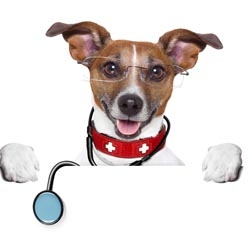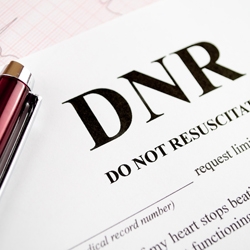 Scientific advisor to the government, The Royal Society, claim that virtually every medical achievement in the 20th century relied on the use of animals in some way. Today about 50-100 million vertebrate animals continue to be used for medical experimentation each year.
Scientific advisor to the government, The Royal Society, claim that virtually every medical achievement in the 20th century relied on the use of animals in some way. Today about 50-100 million vertebrate animals continue to be used for medical experimentation each year.
JuniorDr’s Ben Chandler looks at the current use of animals in clinical treatment and their role in medical training.
I watched anxiously as the patient’s saturations started dropping, the monitors shrieking that the oxygen levels were becoming dangerously low. Urgent action was needed before a hypoxic cardiac arrest occurred. Intubation or any other intervention via the mouth or nose was impossible. As the tension levels rose another doctor undertook a procedure often talked about but very rarely performed – a cricothyroid puncture.
Using a cannula to enter the airway then ventilating the patient’s lungs with oxygen, the doctor was successful at the first attempt and the oxygen levels rose to a safer level; the immediate threat to life avoided. As the atmosphere calmed an instructor gave extra tips on how to undertake this life-saving procedure. For the ‘patient’ – a live sheep – the morning’s training was far from over.
Using animals for any kind of experiment is controversial. The dispute surrounding the use of animals for teaching medical students can be traced back over a hundred years. In the early 1900`s Sir William Bayliss, an eminent physiologist (and the discoverer of hormones) was accused of cruelty to animals based on a demonstration he gave to a group of medical students.
During the experiment he had dissected a dog which the Anti-Vivisection Society claimed was not fully anaesthetised. The dog had also previously been used for experimentation and both activities were illegal at the time. In the following uproar Bayliss successfully sued for libel.
However the Anti-Vivisection Society were not finished with the issue, and following a public donation of funds, proceeded to commission a statue of the dog. The monument to the little brown dog became a battle ground for the opposing groups and was a target for numerous episodes of vandalism.
Events came to a head in 1907 when a large group of medical students marched to the monument intent on knocking it down led to full scale riots. The local council unhappy at the costs of guarding the monument pulled it down three years later. It was not until 1985 that a new version of the little brown dog statue was unveiled and still exists in Battersea Park, London.
ANIMALS IN SIMULATED TRAINING
Until recently trauma training in the USA commonly involved the use of live anaesthetised pigs on which various surgical techniques, such as chest drains and emergency airway interventions, were practised. Following the training session the pigs were euthanised with the aim of avoiding exposure to any pain that may occur.
Advocates for the use of live animals claim that undertaking a procedure on a warm creature replicates reality more closely. The muscle tone, feel of tissues and response to intervention reflect the changes seen in a real human patient. Aside from the animal rights issues, critics argue the differences in anatomy are a huge limitation in the actual surgical experience gained – a view confirmed by at least one clinical trial of candidates learning experience.
In the face of mounting criticism from various groups the number of centres in the United States using live animals as part of their Advanced Trauma Life Support (ATLS) training has now fallen to only 11 out of 280 centres. In the UK the use of live animals for medical training is illegal.
HISTORY OF SIMULATED LEARNING
Medical simulators were first used in the 1960s. Over recent years their use has become much more widespread and the technology has evolved greatly from the basic ‘Resusci-Anne’ to the latest ‘SimMan’.
Since 2001 the ‘TraumaMan’ system has been approved for trauma training. It has become the most widely used surgical trainer device in the world and over 30,000 clinicians are trained with this device annually. TraumaMan consists of a human-like torso, covered with a pliable ‘skin’.
Numerous procedures can be practised on it, including cricothyroidotomy and chest tube insertion. When cut it will mimic bleeding and recent upgrades even allow for integration of focused trauma ultrasound (FAST) scanning into the system. All this technology is not cheap though and a TraumaMan system costs around $24,000 (£15,000 pounds) and to allow optimal use it needs a supply of disposable skins as well.
Mannequins have numerous advantages over using animals – they have human anatomical landmarks, give a more reproducible learning experience and they are much more portable, allowing courses to be run almost anywhere, without the need for animal facilities.
DOCTORS AGAINST ANIMAL USE
Some of the most vocal criticism of animal use in medical education comes from doctors in the form of the Physicians Community for Responsible Medicine (PCRM). Founded in 1985, the organisation has 9,000 doctors in its membership. As well as opposing animal experimentation it also promotes vegetarianism. The PCRM exerts pressure on numerous universities and hospitals using email based campaigns to highlight ongoing animal cruelty.
John Hopkins Medical School is one of PCRMs current targets. Regarded as one of the top medical schools in the US it remains one of the only medical schools where live animals are used for teaching. During the students surgical placement they have the opportunity to attend a surgical skills session using live anaesthetised pigs. The session offers students the chance to suture wounds and operate on various organs, however pressure is now mounting on the university to abandon this practice.
In February this year a criminal complaint was filed with the state attorney claiming that the university ‘should be held criminally liable for cruelty to animals’ and requesting an investigation to halt the live animal component of the school’s medical student curriculum.



